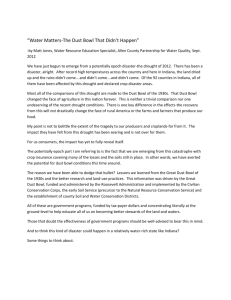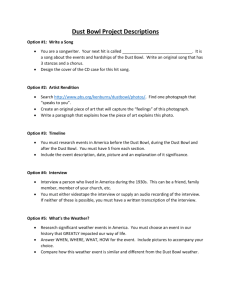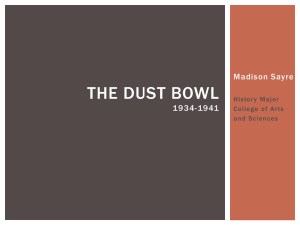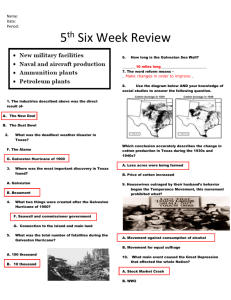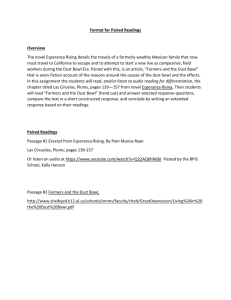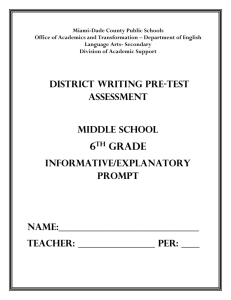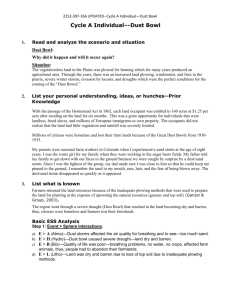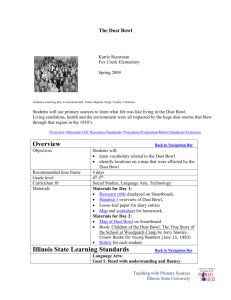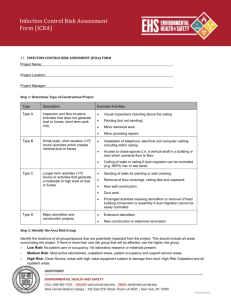Carmona Corina Carmona EDTC 6341.62 Fall 2011 Butler Cycle A
advertisement
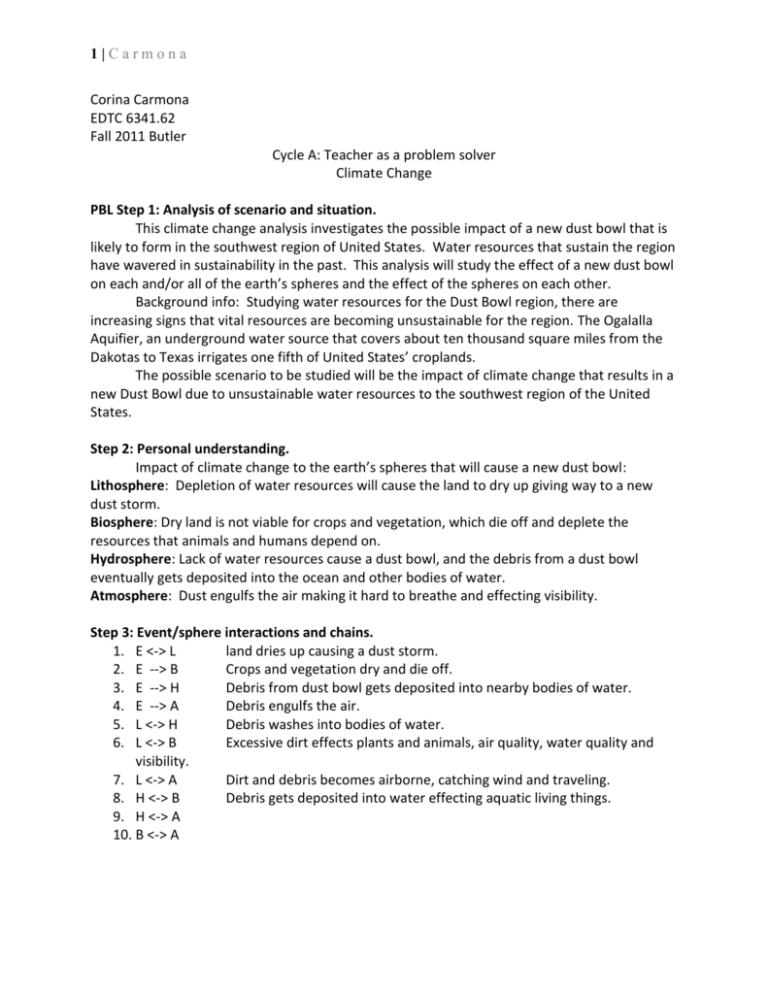
1|Carmona Corina Carmona EDTC 6341.62 Fall 2011 Butler Cycle A: Teacher as a problem solver Climate Change PBL Step 1: Analysis of scenario and situation. This climate change analysis investigates the possible impact of a new dust bowl that is likely to form in the southwest region of United States. Water resources that sustain the region have wavered in sustainability in the past. This analysis will study the effect of a new dust bowl on each and/or all of the earth’s spheres and the effect of the spheres on each other. Background info: Studying water resources for the Dust Bowl region, there are increasing signs that vital resources are becoming unsustainable for the region. The Ogalalla Aquifier, an underground water source that covers about ten thousand square miles from the Dakotas to Texas irrigates one fifth of United States’ croplands. The possible scenario to be studied will be the impact of climate change that results in a new Dust Bowl due to unsustainable water resources to the southwest region of the United States. Step 2: Personal understanding. Impact of climate change to the earth’s spheres that will cause a new dust bowl: Lithosphere: Depletion of water resources will cause the land to dry up giving way to a new dust storm. Biosphere: Dry land is not viable for crops and vegetation, which die off and deplete the resources that animals and humans depend on. Hydrosphere: Lack of water resources cause a dust bowl, and the debris from a dust bowl eventually gets deposited into the ocean and other bodies of water. Atmosphere: Dust engulfs the air making it hard to breathe and effecting visibility. Step 3: Event/sphere interactions and chains. 1. E <-> L land dries up causing a dust storm. 2. E --> B Crops and vegetation dry and die off. 3. E --> H Debris from dust bowl gets deposited into nearby bodies of water. 4. E --> A Debris engulfs the air. 5. L <-> H Debris washes into bodies of water. 6. L <-> B Excessive dirt effects plants and animals, air quality, water quality and visibility. 7. L <-> A Dirt and debris becomes airborne, catching wind and traveling. 8. H <-> B Debris gets deposited into water effecting aquatic living things. 9. H <-> A 10. B <-> A


